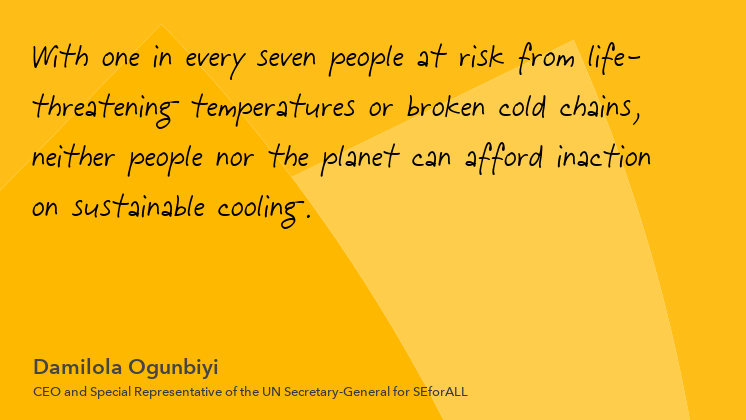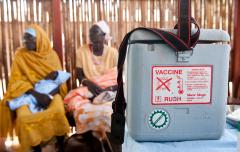1 in 7 people globally at high risk due to lack of access to cooling, with numbers set to rise by 2030
Sustainable Energy for All’s new report Chilling Prospects reveals the escalating threat from lack of access to cooling on people’s ability to survive extreme heat, and warns that this is the decisive decade to deliver fast and sustainable cooling solutions.
- Urgent action and investment needed to protect the 1.2 billion people most at risk from extreme heat and a lack of access to cold chains.
- Access to cooling is the linchpin to enable global food security and storage of medical supplies, protect livelihoods, and reduce heat-related deaths.
- Achieving SDG 7.1.1 (electrification) and SDG 1.1 (extreme poverty eradication) alone enables solutions that would spare nearly a half billion people from high risk of extreme heat by 2030—reducing the overall number of those at high risk by 36 percent.
- How cooling needs are met this decade—how fast and with which solutions—will be decisive for delivering just, inclusive clean energy transitions, adapting to a warming climate, and keeping the UN Sustainable Development Goals (SDGs) within reach.
Access to cooling is now recognized as an urgent global challenge with 1.2 billion people facing extreme and potentially fatal risk from heat.
SEforALL’s annual report Chilling Prospects: Tracking Sustainable Cooling for All 2022 shows that the risks to the most vulnerable from extreme heat are growing because of a lack of access to sustainable cooling. People will remain at high risk if we fail to meet key SDGs that enable access to cooling: universal electrification and eradicating extreme poverty.





